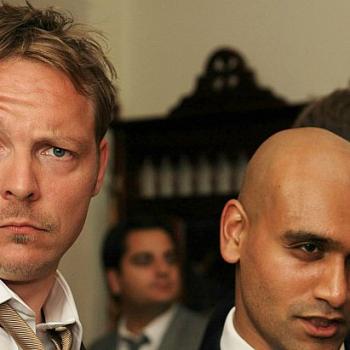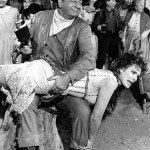The tragic deaths of the Hart children, whose mothers drove their van off a cliff in California at 90 miles per hour with them inside, has hit me hard. It has me thinking, too, about the political activism my parents involved my siblings and I in as children.
The Hart family, you see, was very politically involved.

This picture was taken in March 2016, two years before the children’s horrific deaths. Multiple pictures of the Hart family have surfaced—the Harts with their children at music festivals, at anti-brutality protests, and so on. And here’s the thing that has increasingly struck me as I have looked at these images.
The children are props.
Look at the above picture. Look at all the matching shirts. The picture only means something with the kids. The picture is a statement. It is a political statement—a statement made by the parents.
The children are props.
I remember being a prop. I’ve done that. Stand all in a line and smile sweetly while you hold signs that say “Adoption Saves” and “Abortion Kills Children.” Attendance is mandatory. No, you can’t stay home. Everyone is going. Line up, smile sweetly.
I’m not saying children can’t have political opinions. They most certainly can. But political opinions have to come with options.
Was the photo op above—with the matching Bernie shirt—optional? Would the Harts have taken the same photo with only five of their children, or three, or one? Were the matching shirts optional? Teenagers aren’t usually fans of wearing matching family shirts. And yet here they are—all six of them. Was opting out allowed?
The Harts did not shy from the spotlight. This 2014 photo of young Devonte Hart, with tears in his eyes, hugging a white police officer went viral in the midst of protests of police brutality:

And yet—and yet.
As the story was told, Devonte was standing at a police brutality protest holding a “free hugs” sign and crying openly when the officer walked up to him and spoke with him, and, ultimately, asked for a hug.
I’m left with questions.
Was Devonte required by his parents to hold that sign? Was he allowed to opt out? I remember traveling to rallies with siblings who didn’t want to be there. Certainly, we were on the other side of the aisle—we were protesting against same-sex marriage and abortion—but we were participating in what feels like a similar sort of theater.
We children were props.
Good Christian homeschool family, stair-stepped children all standing in a role. It was an image. A theater. There was no opt-out. You go, you stand, you smile sweetly. You participate. You help craft the image. You are part of the family, and the family is a political image that is being sold. Good Christian homeschool family, stair-stepped children all standing in a role.
We children were props.
The Hart parents crafted a different image, to be sure—but an image nonetheless. Happy same-sex parents with passel of happy adopted children of color. Good progressives, not racist at all, modeling love and unity. Performative white allyship. An image.
An act.
This is why I don’t take my own children to political events. They’re not props in an image I am crafting. My activism is mine. I am not going to bring them along to create a specific image. Granted, I have only two children, both white, both biological. Still. My daughter didn’t want to go to the Women’s March, so I didn’t make her. That could have been an image, after it’s own sort—mother and daughter, attending hand-in-hand. But she is not my prop. She is her own person. In our family, you own your own politics.
I am not against children’s political activism—to the contrary! I want to see teens taken seriously. But to get there, such activism has to come with an opt-out. If attendance and participation is mandatory, is it real? And whose is it, really?
Is children’s involvement really theirs, owned by them and them alone—or is their presence actually about creating a picture-perfect image, a political statement to bolster their parents’ activism—an act of performative theater?
I have a Patreon! Please support my writing!















